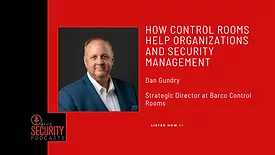Home » Keywords: » workplace security
Items Tagged with 'workplace security'
ARTICLES
How control rooms help organizations and security management
Listen to Dan Gundry, Strategic Director at Barco Control Rooms, in this podcast episode.
December 23, 2024
Security Strategy
The evolution of the corporate security mission
Embedding security into a company's culture helps maintain a competitive advantage.
April 9, 2024
New risks, new regulations: Best practices for travel security in 2021
Stay ahead of the new travel landscape with these safety and risk management best practices.
August 9, 2021
Sign-up to receive top management & result-driven techniques in the industry.
Join over 20,000+ industry leaders who receive our premium content.
SIGN UP TODAY!Copyright ©2025. All Rights Reserved BNP Media.
Design, CMS, Hosting & Web Development :: ePublishing













